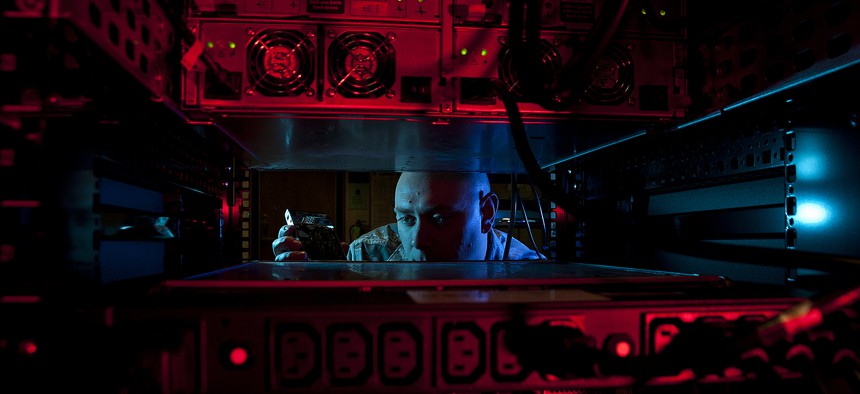
A U.S. Air Force network administrator at Altus Air Force Base, Okla., Jan. 24, 2014. DoD photo by Senior Airman Franklin R. Ramos, U.S. Air Force
Is Your Network Acting Odd? DARPA’s Latest Tool Aims to Sound the Alarm
The system is intended to track activity across an entire network over long periods of time, seeking out deviations from normal activity.
The Defense Department’s R&D group is buying a system that could rely on a network’s behavioral patterns, and any deviation from those, to detect cyberthreats.
The Defense Advanced Research Projects Agency awarded a $6 million contract to Galois, a Portland, Oregon-based computer science company, to build out a product that can identify “advanced persistent threats”—cyberintrusions that allow the actor to remain in the system for an extended period.
The solution would detect “subtle but potentially malicious activities” by tracking the behavioral patterns of a complex network and noting “causality in system activity,” according to Galois’ description of the project.
The company is also working with the National Institute of Standards in Technology on an internet of things pilot. Galois is developing a system that could collect consumer data from smart-home devices and services, while attempting to preserve their privacy. It has also demonstrated software to DOD that could help prevent drones from being hacked.
Galois’ team includes researchers from the University of Edinburgh, the Oregon State University and Palo Alto-based R&D company PARC, a division of Xerox.
The networks in large organizations can be so complex that it’s difficult to track activity, David Archer, a research lead at Galois, said in a statement. It’s possible for these advanced threats to go unnoticed, and during that time steal data “without triggering traditional detection systems.”
The system aims to track activity across all of an organization’s networks and over long periods of time, according to Galois. The group also plans to trace the root cause of anomalous behavior, and eventually, make recommendations about containing the damage.